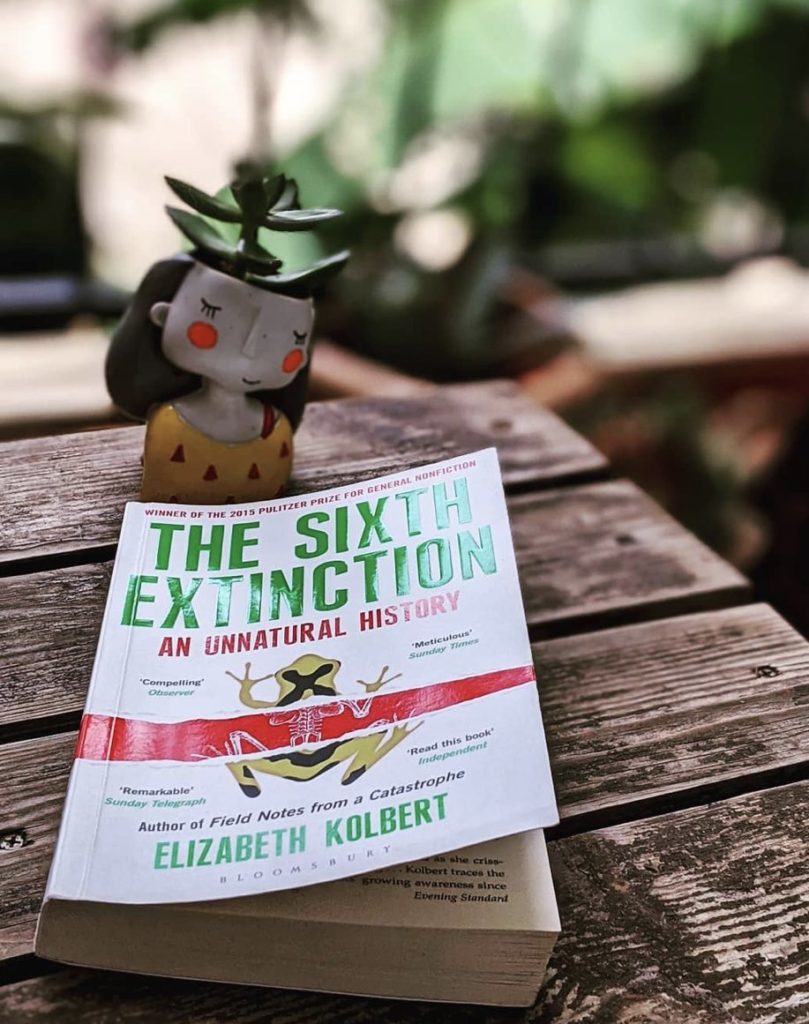Elizabeth Kolbert
A pandemic is probably the best time to read a book on mass extinctions. Or not, depending on taste.
But this is a book I thoroughly enjoyed, even though I am not really a big fan of nature – plants or animals or for that matter, some humans either! Some of it is because of the many, many things I learned, and some of it is the accessible narrative style of the author – it evoked the sense of curiosity that I had for science in general as a child, and I confess, infused that sense of romanticism in science that I haven’t seen in a long time.
It is scientifically interesting to see how concerned we are about the pandemic, when, earlier this century, a species of Chytrid fungi (a genus had to be created for it, and it is called Bd for short) systematically started killing of frogs across continents. Making many of them endangered species. Or the Geomyces destructans, that killed off bats to the tune of 6 million!
Until the end of the 18th century, the idea of extinction did not exist. It then moved to a “uniformist” view that each species struggled and vanished. Then the discovery of the asteroid impact happened. The current version accommodates both lines of thought- long periods of nothing happening and then one cataclysmic event. It involves oceans, rising and falling, tectonic shifts, global warming and cooling etc and yes, an asteroid too. On a related note, there is also a small parallel narrative on Darwin, The Origin of Species and how it weighed in on the extinction debate.
The last 500 million years are divided into three eras, and a lot more periods. While there have been extinctions, in isolation and clusters, and mass extinctions occur every 26 -30 million years, the short list contains only the “big five”. The most famous one is the one that features the asteroid. That was the last one, which happened 66 million years ago, in the End Cretaceous period, leading to the extinction of 75% of species. The ones before were 201 million years ago -that led to the dominance of the dinosaurs, but killed 75% of species that existed then, 252 million years ago – the biggest one that knocked off 96% of all species, 375-360 million years ago – killing 70% of species, and 450-440 million years ago – 60-70% again. The sizes and descriptions of both the tiny organisms and the megafauna that lived, co-existed, and died is fascinating.
The name of the book, as you might have guessed, comes from the possibility of the sixth event that could be added to the big 5. From all the evidence so far, humans will most likely be the cause, but the twist is that we could be the victims too. In the context of the larger lifespan of earth, a short while ago, a species created a way to go beyond only the genetic code to store and distribute information. Language. They then found ways to communicate and collective think about and solve “problems”. And we’re here now.
The book gives a lot of food for thought, but more importantly, at least to me, invokes a sense of curiosity and awe. A lot thanks to science, and some because of the variety of places she visited to write this book. The moment she narrates, while on a tiny island at the edge of the Great Barrier reef under a starry sky – For a brief moment I felt I understood what it must have been like for an explorer like Cook to arrive at such a place, at the edge of the known world – sums up the effect of the book very well.


Leave a Reply